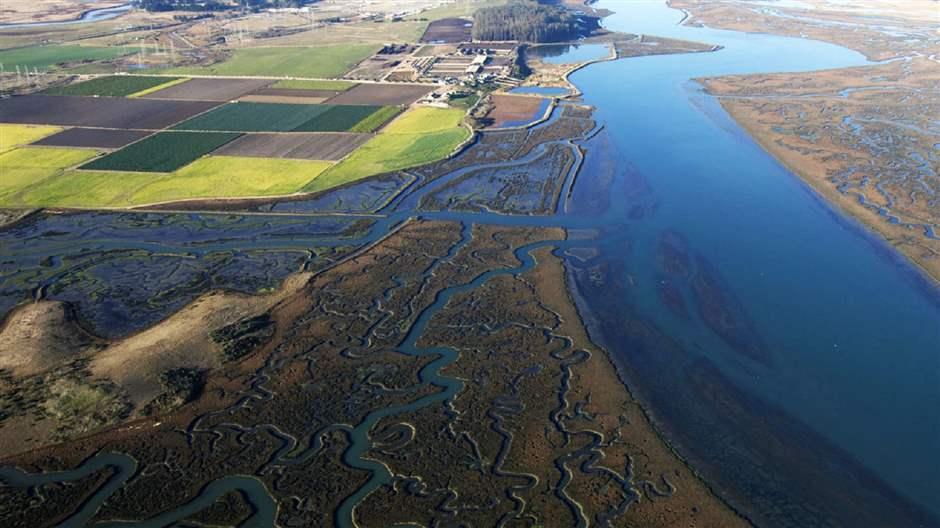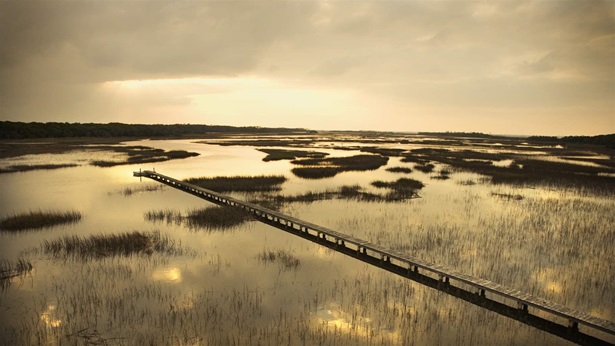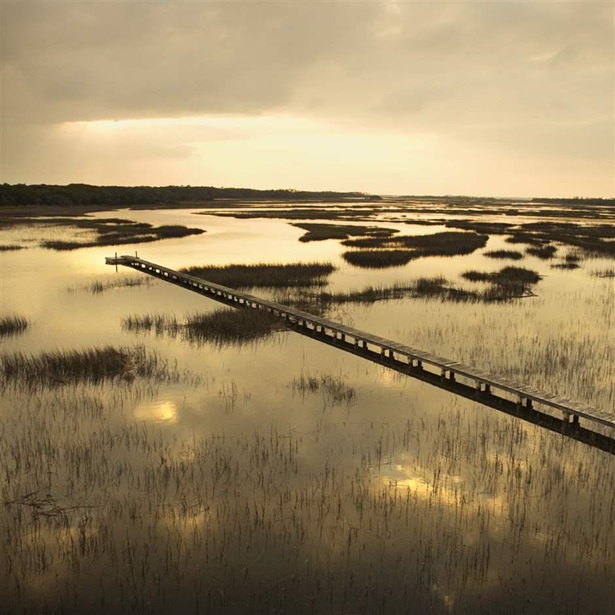Webinar Addressed Coastal Landscapes in Transition
Pew event examined impacts of sea-level rise on ‘blue carbon’ ecosystems

Coastal wetlands in the United States capture and store millions of tons of carbon each year, making these “blue carbon” ecosystems an important focus for states looking to enhance their resilience to climate effects, bolster mitigation efforts, and secure the myriad benefits these habitats provide to humans and wildlife.
Experts project that climate change impacts such as sea-level rise, erosion, and flooding will significantly alter coastal landscapes over the next century—and that blue carbon ecosystems, including salt marshes, tidal forests, and seagrass beds, will be particularly susceptible. These changes, in turn, have the potential to affect coastal habitats’ capacity to capture and store carbon.
On Nov. 9, 2022, The Pew Charitable Trusts hosted “Coastal Landscapes in Transition: Impacts of Sea-Level Rise on Blue Carbon Ecosystems”—the third webinar in Pew’s Blue Carbon Network series. The event explored the impacts of sea-level rise on blue carbon ecosystems in the mid-Atlantic and on the West Coast and offered adaptive management strategies.
Agenda
Welcome, opening remarks and speaker introductions
Sylvia Troost, senior manager, conserving marine life in the U.S., The Pew Charitable Trusts
Sea-level rise, landscape-level transitions, carbon impacts, and restoration
Molly Mitchell, research assistant professor, Virginia Institute of Marine Science
How to get better information about how these landscapes will transition
Melinda Martinez, Mendenhall Postdoctoral Fellow with the U.S. Geological Survey within the Wetland and Aquatic Research Center in Lafayette, Louisiana
Case study: Major restoration of tidal marshes underway at Elkhorn Slough
Monique Fountain, director, Tidal Wetland Program at Elkhorn Slough National Estuarine Research Reserve
Q&A
Moderated by Sylvia Troost
Wrap-Up/Closing Remarks
Sylvia Troost






